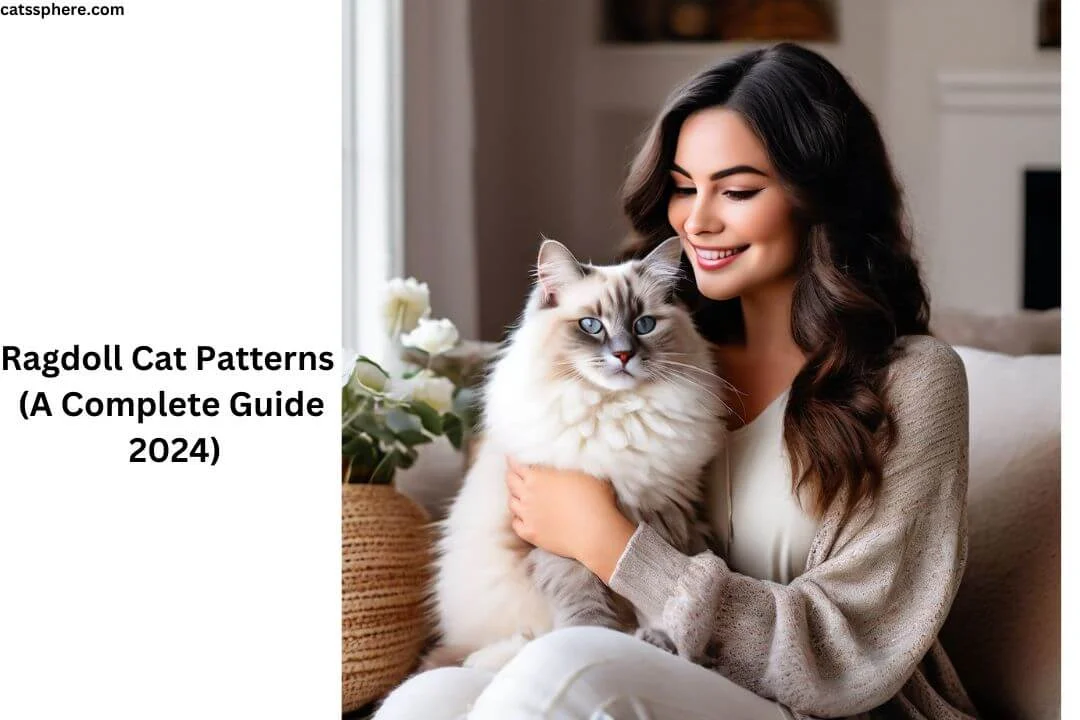Introduction
Ragdoll cats are renowned for their gentle temperament, striking blue eyes, and plush, silky coats. These felines are not only adored for their affectionate nature but also for their stunning coat patterns. Understanding the 5 Ragdoll Cat Patterns can enhance your appreciation of this breed and help you choose the perfect pet.
History and Origin of Ragdoll Cats
The Ragdoll breed originated in the 1960s in Riverside, California, developed by Ann Baker. Baker aimed to create a breed with a unique appearance and docile temperament. Over time, the distinctive coat patterns of the Ragdoll became one of the breed’s hallmark traits, with breeders refining these patterns to the beautiful variations we see today.
Understanding Ragdoll Cat Patterns
The variety in Ragdoll cat patterns is largely due to genetics. The patterns are influenced by the presence of specific genes that dictate color distribution and markings. Each pattern has its own unique set of characteristics, making each Ragdoll cat truly one-of-a-kind.
1. Colorpoint Pattern
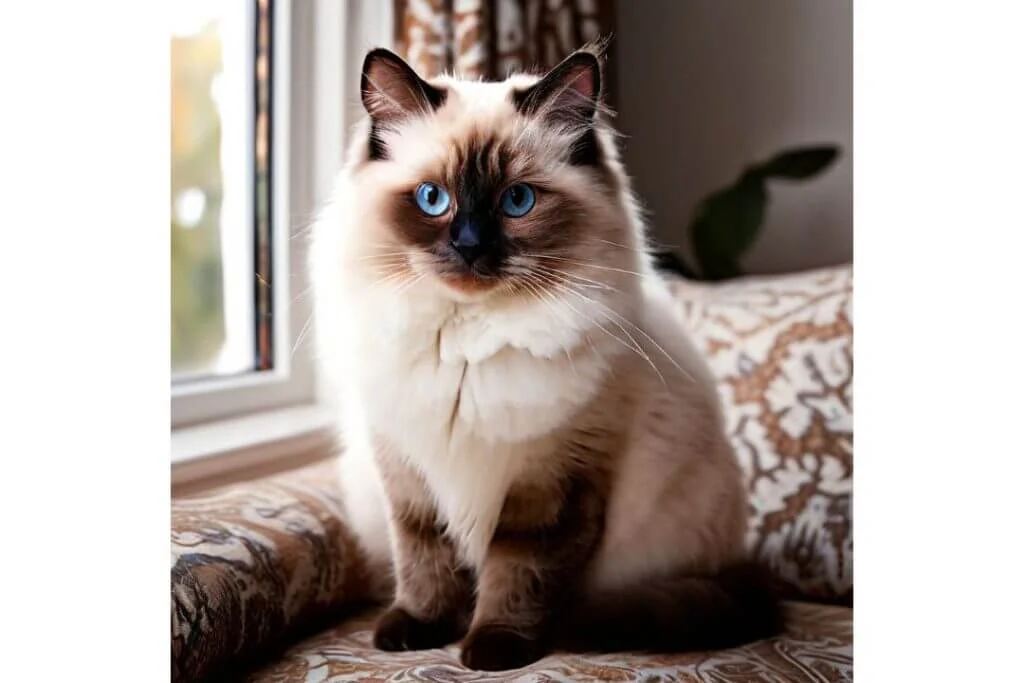
Characteristics
The Colorpoint pattern is one of the most distinctive and recognizable patterns in Ragdoll cats. This pattern is marked by darker colors on the extremities of the cat’s body—specifically, the ears, face, paws, and tail—while the rest of the body remains a lighter shade. This creates a striking and beautiful contrast that is highly sought after by cat enthusiasts. The darker points are due to a temperature-sensitive enzyme that causes pigment to form on the cooler parts of the body.
Common Color Combinations
- Seal Point: Features dark brown, almost black points with a lighter beige or cream body.
- Blue Point: Displays bluish-grey points with a lighter, silvery-grey body.
- Chocolate Point: Exhibits rich, milk chocolate-colored points with an ivory or light tan body.
- Lilac Point: Shows soft, frosty grey points with a magnolia or very pale cream body.
Care Tips
Colorpoint Ragdolls require regular grooming to maintain their luxurious coats and prevent tangling and matting. Their lighter body color can show dirt more easily, so frequent baths might be necessary to keep them looking their best. Additionally, their coats benefit from regular brushing to remove loose hair and reduce shedding.
2. Mitted Pattern
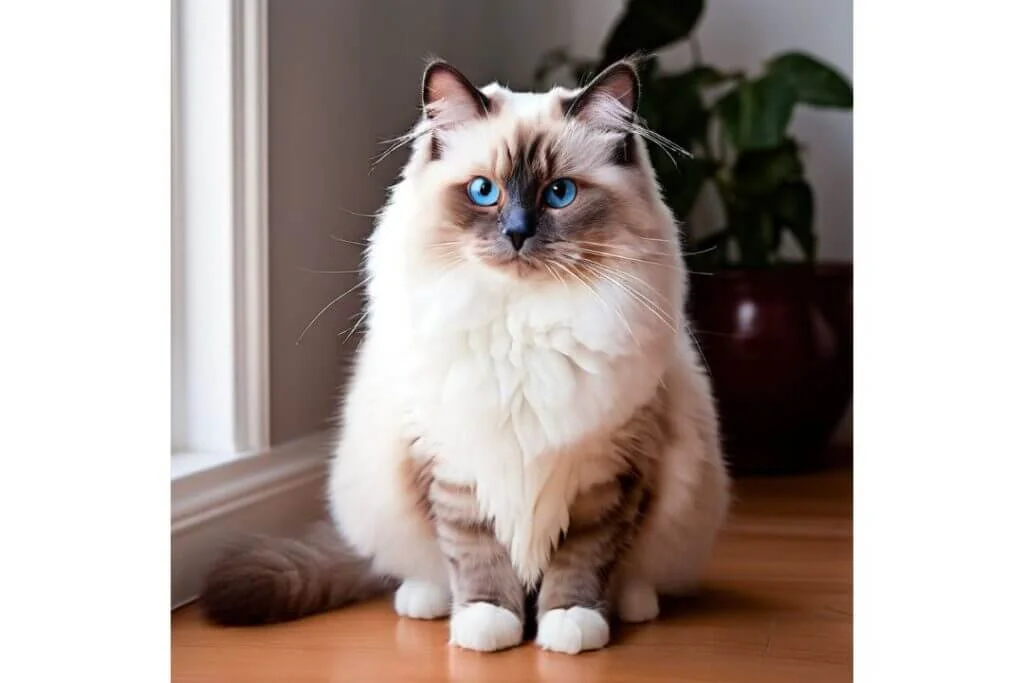
Characteristics
The Mitted pattern in Ragdoll cats is characterized by the appearance of white paws that resemble mittens, hence the name. These cats also typically have a white chin and may feature a white belly stripe. A white blaze on the forehead is also common in mitted Ragdolls, adding to their distinctive look. The contrast between the white mittens and the rest of their colored fur creates a charming and unique appearance.
Common Color Combinations
- Seal Mitted: Dark brown points with white mittens, a white chin, and a lighter beige or cream body.
- Blue Mitted: Bluish-grey points with white mittens, a white chin, and a silvery-grey body.
- Chocolate Mitted: Milk chocolate-colored points with white mittens, a white chin, and an ivory body.
- Lilac Mitted: Frosty grey points with white mittens, a white chin, and a magnolia body.
Care Tips
Mitted Ragdolls need regular grooming to keep their coats free of tangles and mats. Special attention should be paid to the white fur, as it can easily become stained. Regular brushing helps maintain the coat’s softness and appearance. Keeping the white areas clean will help your cat look its best.
3. Bicolor Pattern
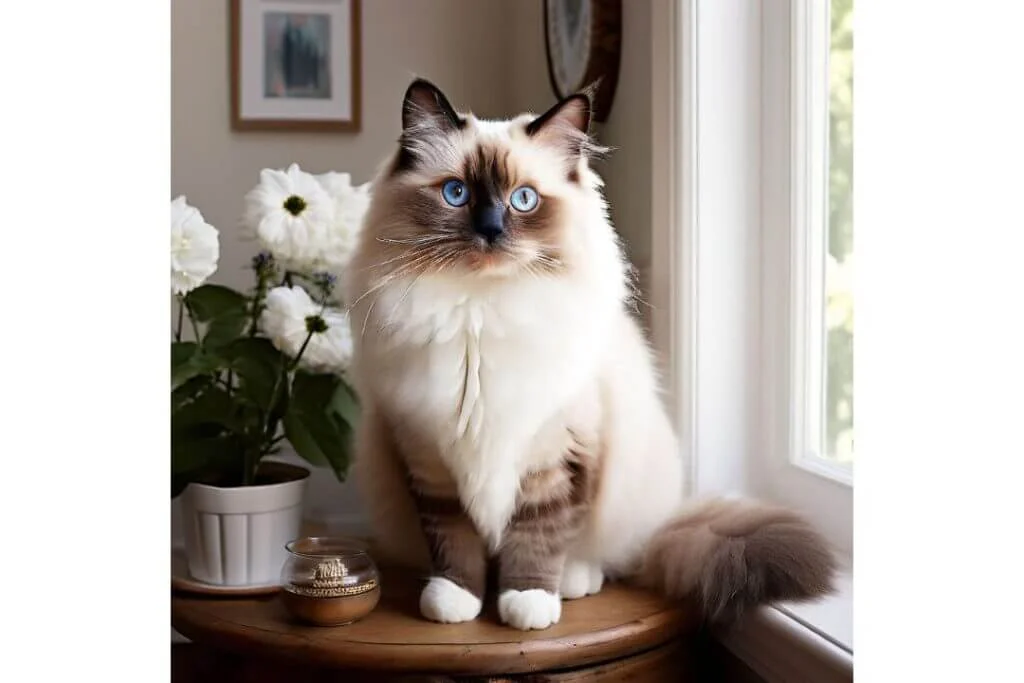
Characteristics
Bicolor Ragdolls have a mix of white and another color, creating a distinctive pattern. They typically have an inverted V-shaped marking on their face, white legs, and a white belly. The rest of their fur is a solid color, which can vary. This pattern provides a beautiful contrast and makes Bicolor Ragdolls stand out.
Common Color Combinations
- Seal Bicolor: Dark brown points with white markings, including an inverted V on the face, white legs, and a lighter beige or cream body.
- Blue Bicolor: Bluish-grey points with white markings, including an inverted V on the face, white legs, and a silvery-grey body.
- Chocolate Bicolor: Milk chocolate-colored points with white markings, including an inverted V on the face, white legs, and an ivory body.
- Lilac Bicolor: Frosty grey points with white markings, including an inverted V on the face, white legs, and a magnolia body.
Care Tips
The white fur of Bicolor Ragdolls can show stains more prominently, so maintaining their cleanliness is essential. Regular brushing several times a week helps keep their coat in top condition and prevents tangles and matting. Pay particular attention to the white areas to keep them looking bright and clean.
4. Lynx Pattern
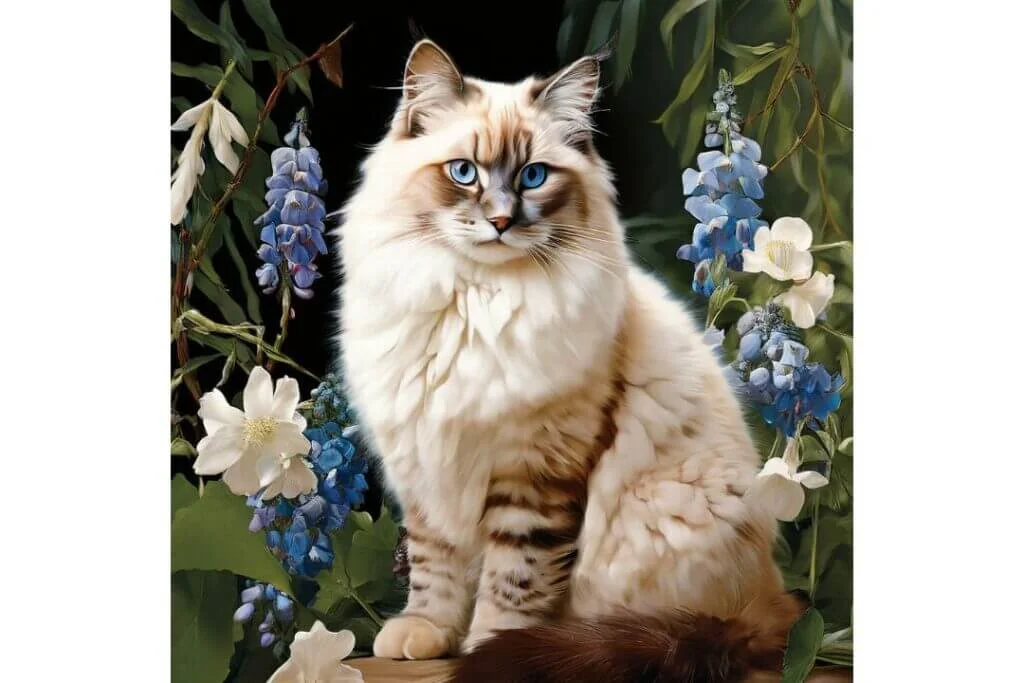
Characteristics
The Lynx pattern in Ragdoll cats adds a striped, tabby-like appearance to the traditional Ragdoll markings. This pattern can overlay any of the other patterns, including Colorpoint, Mitted, and Bicolor. The lynx pattern is characterized by distinct, darker stripes on the cat’s points, adding an additional layer of texture and interest to their coat.
Common Color Combinations
- Seal Lynx: Dark brown points with lynx stripes and a lighter beige or cream body.
- Blue Lynx: Bluish-grey points with lynx stripes and a silvery-grey body.
- Chocolate Lynx: Milk chocolate-colored points with lynx stripes and an ivory body.
- Lilac Lynx: Frosty grey points with lynx stripes and a magnolia body.
Care Tips
Lynx-patterned Ragdolls benefit from regular grooming to maintain their distinctive stripes and overall coat health. Regular brushing helps to prevent matting and tangles and keeps the fur looking smooth and sleek. Pay attention to the areas with stripes to ensure they remain well-defined and free from knots.
5. Tortoiseshell Pattern
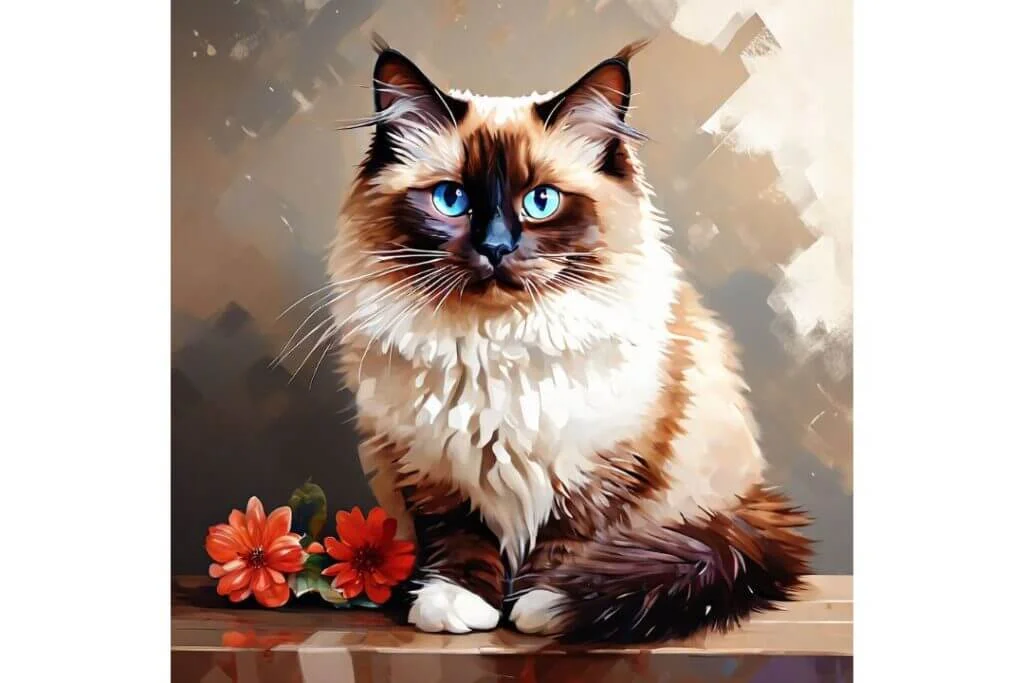
Characteristics
Tortoiseshell, or “Tortie,” Ragdolls have a mottled mix of two colors, often red and black or their diluted versions, such as cream and blue. This pattern can combine with other patterns, adding even more variety to the cat’s appearance. The Tortie pattern results in a unique and beautiful mosaic of colors that can vary widely from one cat to another.
Common Color Combinations
- Seal Tortie: Dark brown and red patches with a lighter beige or cream body.
- Blue Tortie: Bluish-grey and cream patches with a silvery-grey body.
- Chocolate Tortie: Milk chocolate and red patches with an ivory body.
- Lilac Tortie: Frosty grey and cream patches with a magnolia body.
Care Tips
Tortie Ragdolls require regular grooming to keep their multi-colored coats vibrant and healthy. Consistent grooming helps to prevent matting and tangles and maintains the coat’s softness and shine. Pay special attention to the different colored patches to ensure they are clean and well-groomed, highlighting the beauty of their unique pattern.
Comparing Ragdoll Patterns
The differences between Ragdoll patterns are not just visual. Each pattern can also influence the cat’s personality slightly, although all Ragdolls share a generally docile and affectionate nature. Some owners find that certain patterns, like the Lynx or Tortie, seem to add a touch of playfulness to their cat’s demeanor.
Choosing the Right Ragdoll Pattern for You
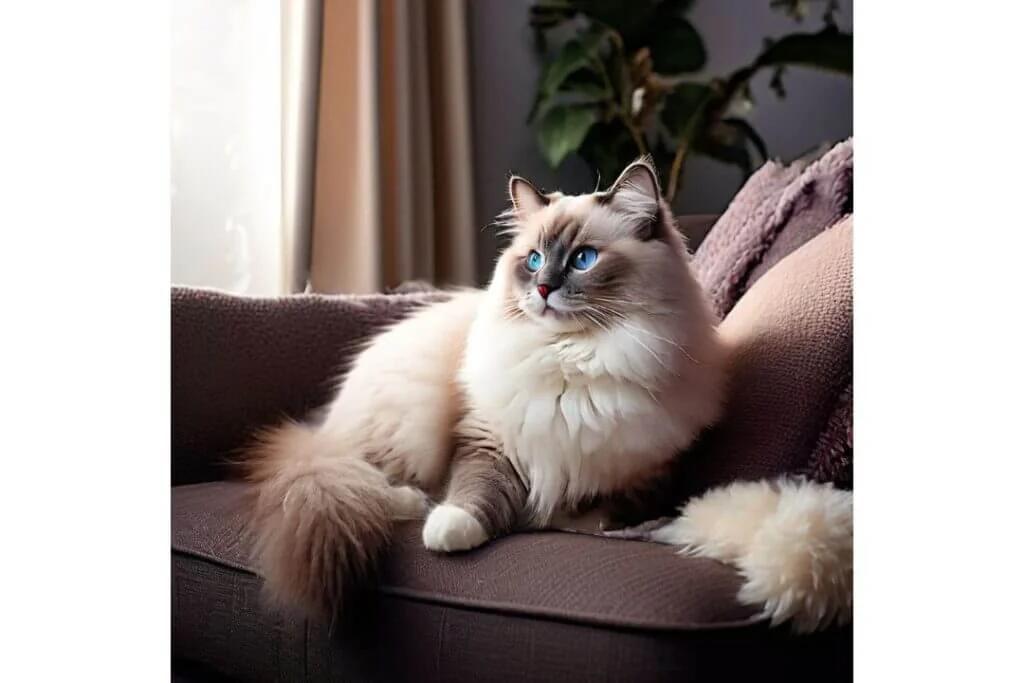
When selecting a Ragdoll cat, consider your lifestyle and personal preferences. Some patterns require more grooming, while others might be less prone to showing dirt. Think about the aesthetic you prefer and how much time you can dedicate to grooming.
Ragdoll Cat Size Comparison: A Comprehensive Guide
Male Flame Point Ragdoll Cat (Detailed Guide 2024)
How to Identify a Ragdoll Cat (10 steps)
Grooming and Maintenance
General Grooming Tips
All Ragdoll cats benefit from regular grooming to keep their coats healthy and free of mats. Brush your Ragdoll at least twice a week, and more often if they have longer or thicker fur.
Specific Care for Different Patterns
- Colorpoint and Bicolor: Focus on keeping the lighter areas clean.
- Mitted: Pay attention to the white mittens and chin.
- Lynx and Tortie: Ensure their unique markings stay distinct by regular grooming.
Health Considerations
Common Health Issues
Ragdolls are generally healthy but can be prone to certain conditions like hypertrophic cardiomyopathy (HCM) and bladder stones. Regular veterinary check-ups are essential.
Preventative Care
Maintain a balanced diet, ensure regular exercise, and keep up with grooming to prevent health issues. Early detection through routine vet visits can help manage potential problems.
Living with a Ragdoll Cat
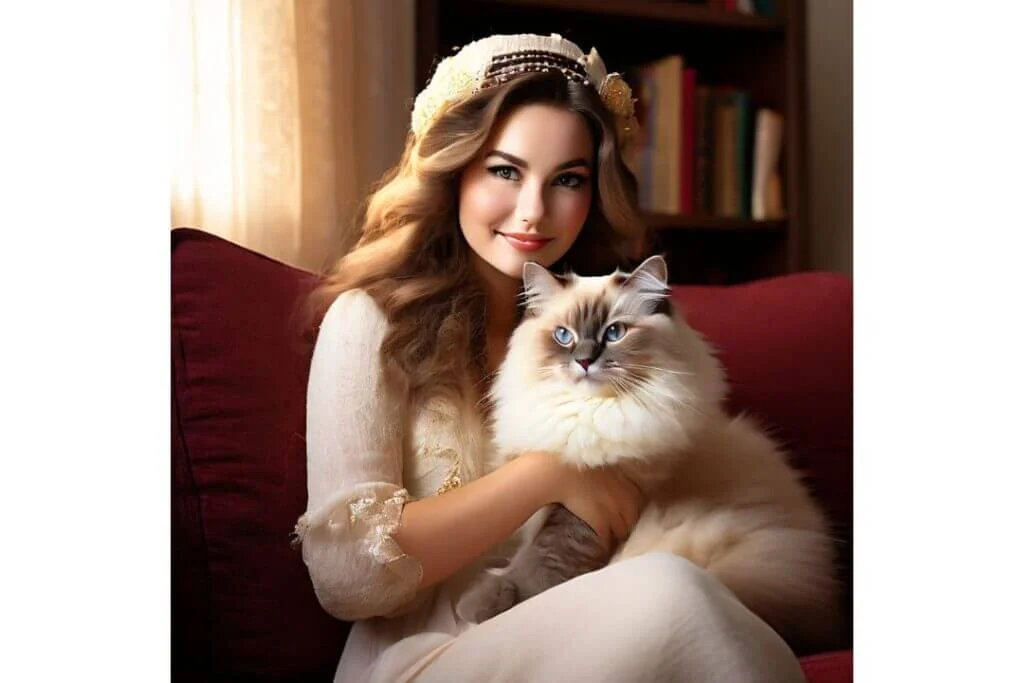
Creating a Comfortable Home Environment
Ragdolls thrive in a calm and loving environment. Provide plenty of soft bedding, scratching posts, and toys to keep them entertained and comfortable.
Socialization and Training
Ragdolls are sociable and enjoy interacting with their owners. Start socialization early, and use positive reinforcement techniques for training. They can even learn tricks and commands, much like dogs.
Ragdoll Cat Pattern Myths and Misconceptions
Debunking Common Myths
There are many myths about Ragdoll patterns, such as certain patterns being rarer or more valuable. In reality, all patterns are equally cherished, and rarity does not necessarily equate to value.
Understanding the Truth
The truth is that every Ragdoll cat, regardless of pattern, is unique and special. Their affectionate nature and beautiful appearance are what truly matter.
Conclusion
Ragdoll cats are a delightful addition to any home, with their stunning patterns and gentle demeanor. Whether you prefer the striking Colorpoint, the charming Mitted, the classic Bicolor, the wild Lynx, or the vibrant Tortie, there’s a Ragdoll pattern for everyone. By understanding and appreciating these patterns, you can ensure your Ragdoll cat receives the care and love they deserve.
FAQs
What is the rarest Ragdoll cat pattern? The Lynx and Tortie patterns are often considered the rarest due to their unique and complex markings.
How can I determine the pattern of my Ragdoll kitten? Ragdoll kittens’ patterns become more distinct as they age. Consulting with a breeder can provide clarity on their specific pattern.
Do Ragdoll cat patterns change as they age? Yes, Ragdoll cats’ patterns can become more pronounced as they mature, with colors deepening and markings becoming clearer.
Are certain patterns more prone to health issues? No specific pattern is more prone to health issues. Health concerns are generally related to the breed as a whole rather than individual patterns.
Can Ragdoll patterns affect their behavior? While patterns themselves don’t directly influence behavior, some owners believe that certain patterns, like Lynx or Tortie, may add a playful touch to their cat’s personality.

